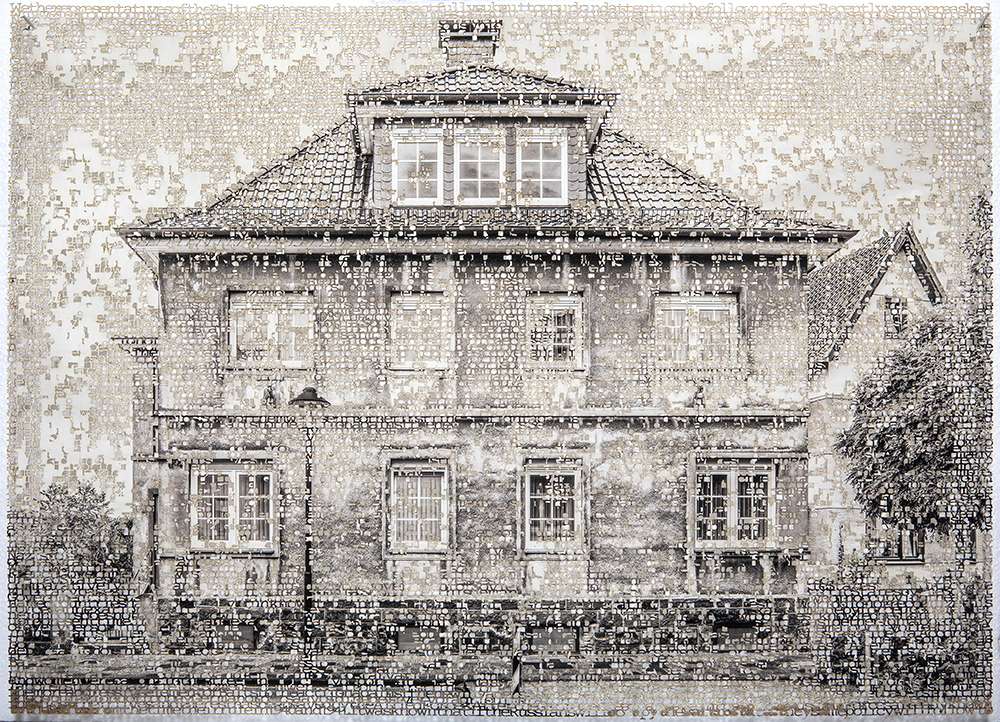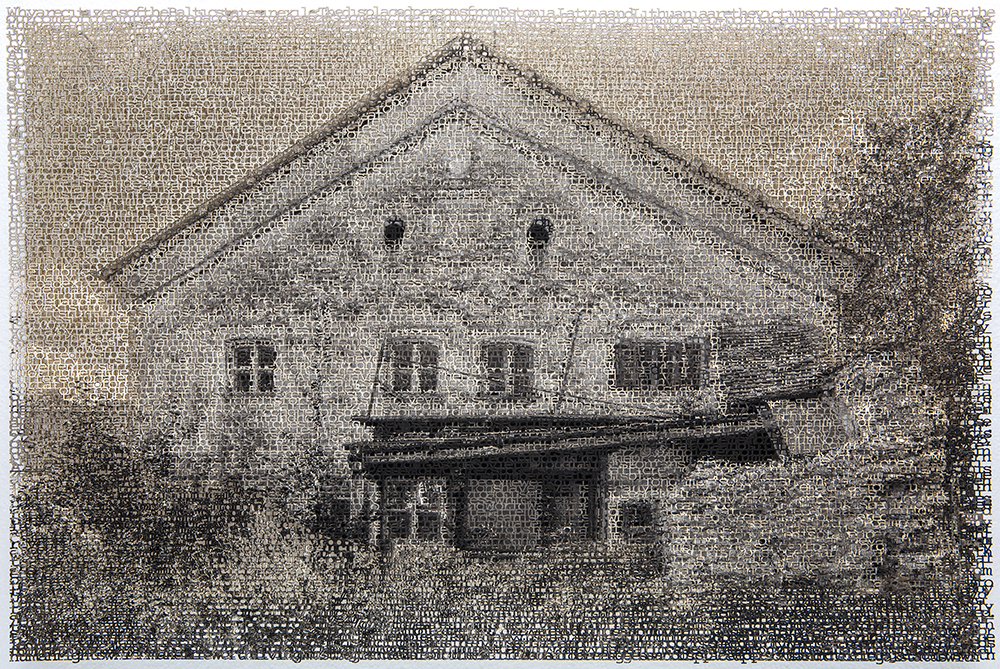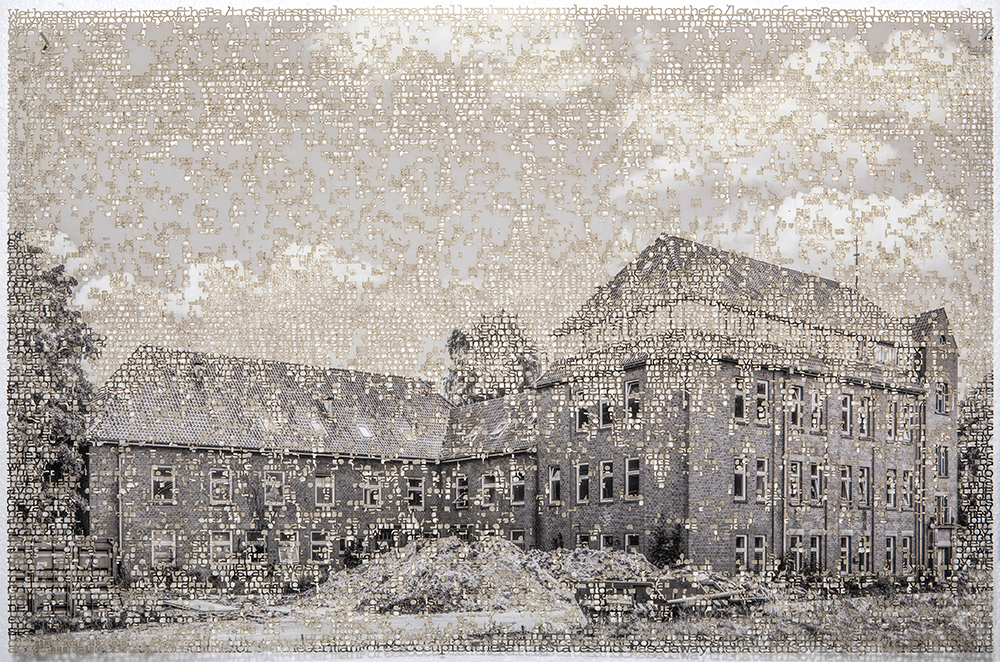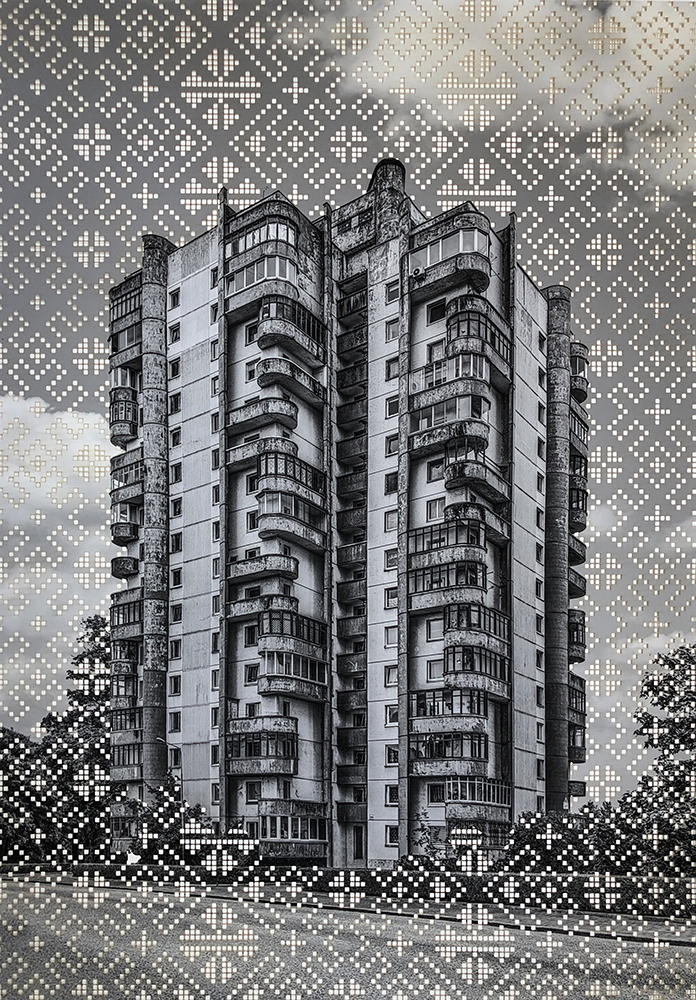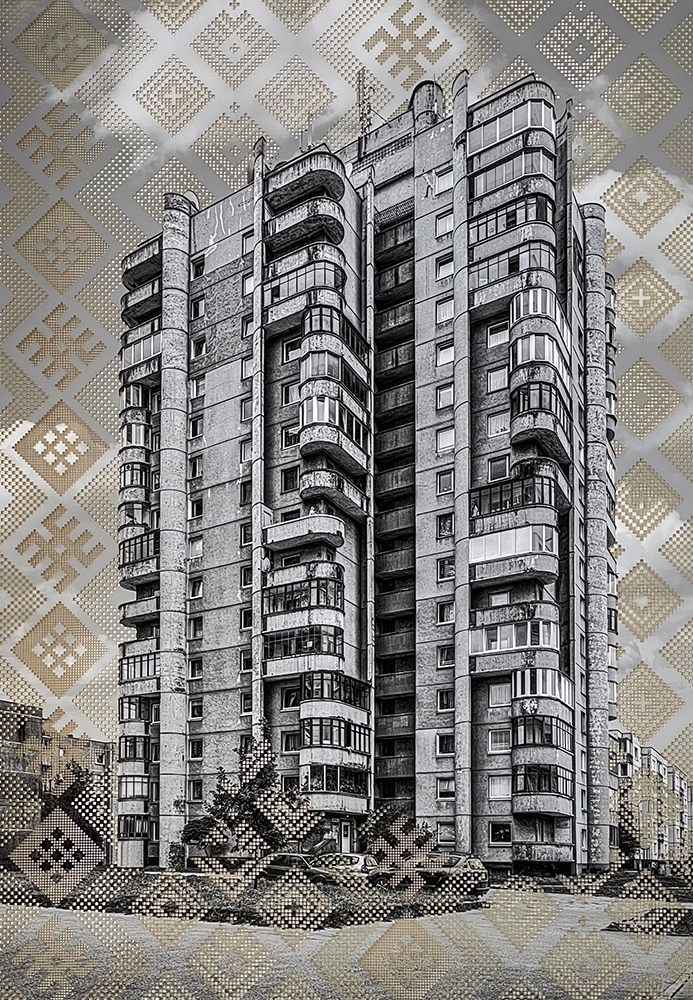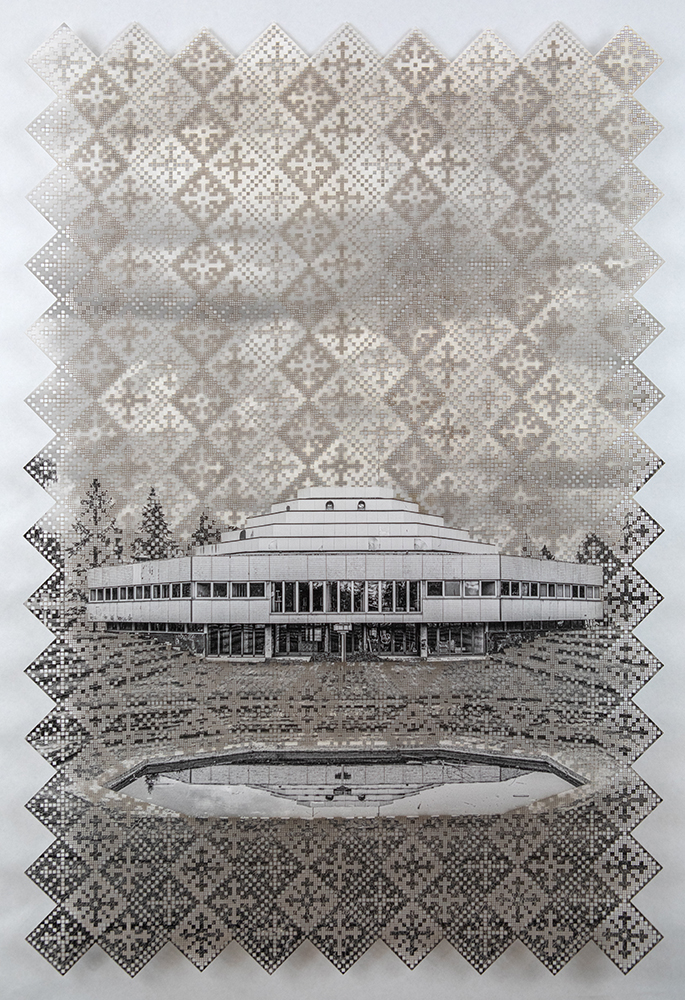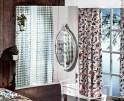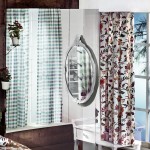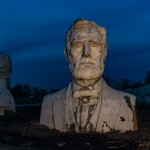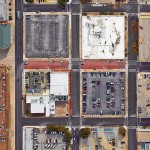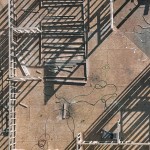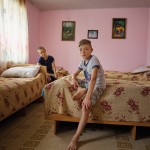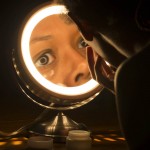Krista Svalbonas: What Remains at the Marshall Gallery
Krista Svalbonas has recently opened an exquisite and historic exhibition at the Marshall Gallery in Santa Monica, CA that will run through February 24th, 2024. Experiencing the work in person is critical to appreciating these historically rich and tactile works. As artists, our best work comes from the stew of our lives and our personal histories. Svalbonas, in researching her parents’ journey through displacement and immigration, has created unique and powerful bodies of work that are fragile and lace-like expressions of time, place, and memory.
Douglas Marshall of the Marshall Gallery shares these insights:
Twenty pieces on view from the series What Remains and Displacement showcase a deeply researched and timely creative endeavor from the Philadelphia-based artist. Archival letters and folk textile patterns of the artist’s ancestors are cut into original architectural photographs made across dozens of trips to Lithuania, Estonia, Latvia, and Germany. Along with humble portraits of surviving refugees, the projects illuminate the story of Baltic displaced persons in post-war Europe and later under Soviet occupation, and their will to preserve a fractured cultural heritage. Translating the universal experience of longing for what’s been lost, Svalbonas’ process-forward work intelligently speaks to this near-forgotten history and provokes consideration of the impact of contemporary forced migrations.
An interview with the artist follows.
What Remains
My work is concerned with ideas of home and dislocation, as well as with the impact of architecture on human psychology. As an ethnically Latvian/Lithuanian artist my cultural background has informed this interest in architecture. During the Soviet era, the capitals of both Latvia and Lithuania saw cultural buildings repurposed into warehouses and churches demolished. The old town centers were neglected and fell into decay. New construction was cheaply made, with no insulation and inadequate plumbing and heating. My connection to this history has made me acutely aware of the impact of politics on architecture and, in turn, on a people’s daily lived experience. I started to consider the effect of architecture on the tens of thousands of refugees, my parents included, who escaped a life under communism but went years without a permanent home. In recent years I have visited Latvia and Lithuania to further understand this turbulent time in my family’s history and to photograph the architecture there. Many of the structures built during the Soviet occupation of the Baltic region still stand today. During this period the Baltic people continued to practice art forms such as weaving to ensure that their traditions would survive, despite the Soviet regime’s program of cultural suppression.
My recent work combines photographs of Soviet architecture in the Baltic region with traditional Baltic textile designs. I use a laser cutter to cut the textile patterns directly onto my black and white photographs of the cold and imposing buildings. This series explores the power of folk art and crafts as a form of defiance against the Soviet occupiers. It does this by focusing on how traditional textile designs provide a counterpoint to Soviet-era architecture and the memory of its totalitarian agenda. The juxtaposition of concrete structures with folk art designs also references the strength and determination of the women who created the weavings. Overall, this work examines the ways in which people are shaped by their environment, and how they can rebel against it to preserve their identity and culture. – Krista Svalbonas
Tell us about your growing up and what brought you to photography?
I began photographing in high school. As a child I was always interested in the Arts, and my parents supported this interest by enrolling me in after-school Art programs, workshops and purchasing art supplies. After taking every art class available in high school, I decided to enroll in a darkroom photography class. I was hooked. So hooked that my parents helped me build a darkroom in a small basement closet space of our house. I would spend hours there, printing images. I continued this practice in both college and grad school, enrolling in Photography programs.
Exploring your legacy as an image maker and interdisciplinary artist is a fascinating journey through shape and form. Your practice uses so many materials and ways of working, but the subject matter continues to revolve around the built structure. What keeps you interested in this subject?
In both college and grad school I was a photo major, but I always took an abundance of courses outside of my major in sculpture. I have always been interested in the material nature of photography and how to push those boundaries where image collides with object. I think I have always been interested in how the places we live in and the structures we inhabit inform our ideas of home. I don’t think I really knew what was drawing me to photograph my architectural surroundings until I started to delve into my family’s history as WWII refugees. As I keep exploring my own identity, I am continually drawn to these subjects and keep returning to them.
How are you able to maintain such a vigorous practice, that demands incredible research, travel, and construction — and be a full time educator?
I have an extraordinarily active schedule. At my university where I teach, and I am also the chair of my department. I do an immense amount of research for my projects, and try and produce work as much as I can. I very recently had a conversation with Douglas of Marshall gallery, who is currently hosting my solo exhibition, and we chatted about artists who quite literally “have to” make work, as if compelled. I’ve been like that for as long as I can remember, always curious, always learning, always making. I’m lucky that my teaching helps support this addiction to learning and obsession with acquiring new skills. It’s often exhausting filling my days with such intense activity and in the past several years I’ve learned to build in days of rest to recharge. These days, if you don’t find me in the classroom or the studio, you’ll find me hiking to the top of some mountain peak somewhere.
Tell us how your interest in Displacement Camps began?
I started researching DP camps as a way to understand my own family history. Both my parents and grandparents lived in these spaces and even though I grew up with these stories as a child I never really understood what these spaces were and how my family lived in them while they were there. It was only as I started researching that the project expanded and grew into finding and documenting 50 of the roughly 200 DP camps that held Baltic people after WWII.
I can only imagine how much more you learned about your parent’s experience and it surely must have deepened your understanding of their journey, and possibly deepened your connection to them.
Absolutely, the journey is as much part of the work as it is physically making the pieces. Each piece contains so much history, experiences and memories for me and for the former inhabitants of these places. Visiting the former camp sites that my mother’s family and father’s family inhabited was an emotional and eye-opening experience.
How did you come to present the work using laser technology?
Using a laser cutter was quite honestly happenstance. I had been trying various ways to work with the imagery I had captured and nothing felt quite right. The university where I was teaching was offering lessons on how to use laser cutters and so I enrolled. I started thinking about the letters I collected from various Baltic archives and whether I could combine their words (the words of the refugees) with my images. I started running a series of tests and about 6 months later I was able to start producing the work.
Can you speak to your use of text and of embroidery patterns?
The text I am using in my Displacement series comes from plea letters the refugees were sending to the US, UK and Canada essentially asking for asylum. I was able to document these letters in various archives across the US in my research on the camp locations. The textile patterns I am using in my What Remains series comes from traditional folk textile patterns from the Baltic countries. I’ve sourced them through family books as well as cultural libraries in the US. They are patterns, that I’ve grown up with, seeing them on table cloths, curtains, pillows and mittens.
Tell us about your exhibition at the Marshall Gallery in Los Angeles (that I was so lucky to see).
What Remains, is a solo exhibition comprising of two bodies of work which focus on Baltic history surrounding WWII. These are two recently completed bodies of work, Displacement and What Remains.
Displacement captures the traces of former WWII displaced person camps; combining past and present in a series of laser cut images on photographic paper. What Remains combines photographs of Soviet architecture in the Baltic region with traditional Baltic textile designs. After dedicating 5 years to producing these works, I am so thrilled to be showing so many of these pieces together at the gallery.
Are you continuing to make work around the idea of Displacement Camps?
I’m currently working on two new bodies of work that revolve around the same time frame as the WWII history of the DP camps, but not really making more work about the camps. That being said, I’ve been working on a book that will offer a historical perspective of the displacement camp history as well as showcasing the Displacement series and portraits I’ve made while traveling North America, interviewing former refugees.
What is inspiring you these days?
I’m in the process of investigating two 19th century techniques, anthotypes and cliché verre. They are new to me and I’m super excited and energized to be learning and experimenting with them currently.
Krista Svalbonas holds a BFA in Photography and an MFA in Interdisciplinary studies. Her work has been shown in a number of exhibitions including: the Utah Museum of Contemporary Art, Spartanburg Art Museum in South Carolina, Howard Yezerski Gallery in Boston and Klompching Gallery and ISE Cultural Foundation in New York. Her work is part of the permanent collections of the Cesis Art Museum in Latvia, the Gregg Museum of Art and Design in North Carolina and the Woodmere Art Museum and Temple University in Philadelphia. Recent awards include a Center for Photographic Art Artist Grant (2022), Baumanis Creative Projects Grant (2020), Rhonda Wilson Award (2017), Puffin Foundation Grant (2016) and a Bemis Fellowship (2015) among others. In 2022/23 Svalbonas had solo exhibitions of her series Displacement, at the Copenhagen Photography festival in Denmark, the Tallinn city museum in Tallinn, Estonia, Museum of Textile and Industry in Augsburg Germany and the National Museum in Vilnius Lithuania. She is an associate professor of photography at St. Joseph’s University. She lives and works in Philadelphia.
Instagram:@kristasvalbonas
Founded as Marshall Contemporary in 2018, the Marshall Gallery works to promote the work of photo-based artists with an emphasis on process, printmaking craftsmanship and conceptual innovation. Through an expanding series of dialogue-focused events including unique exhibitions, artist talks, workshops and art fair presentations, the gallery hopes to expand the conversation about photography’s ever-evolving place in contemporary art and its role in shaping our collective memory. On behalf of our clients, the gallery takes great pride in the presentation and conservation of all works fulfilling acquisitions with elegant, museum-quality framing.
Instagram: @marshall.gallery
Posts on Lenscratch may not be reproduced without the permission of the Lenscratch staff and the photographer.
Recommended
-
Jake Corcoran in Conversation With Douglas BreaultAugust 10th, 2025
-
Matthew Cronin: DwellingApril 9th, 2025
-
Jordan Gale: Long Distance DrunkFebruary 13th, 2025
-
Michael O. Snyder: Placing Bets on MosquitosFebruary 12th, 2025
-
Tom Crawford: OverlookedFebruary 11th, 2025

